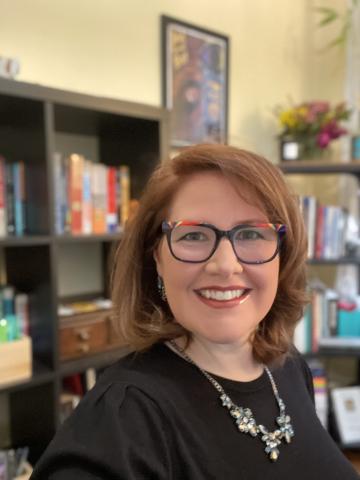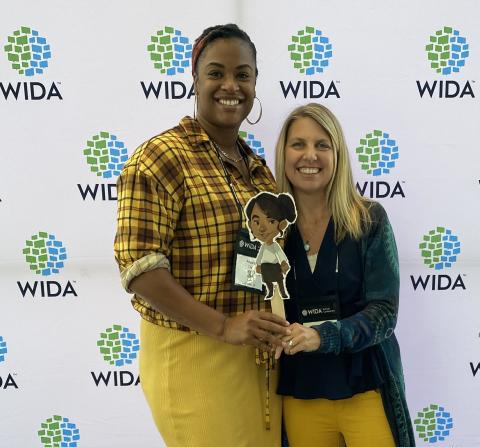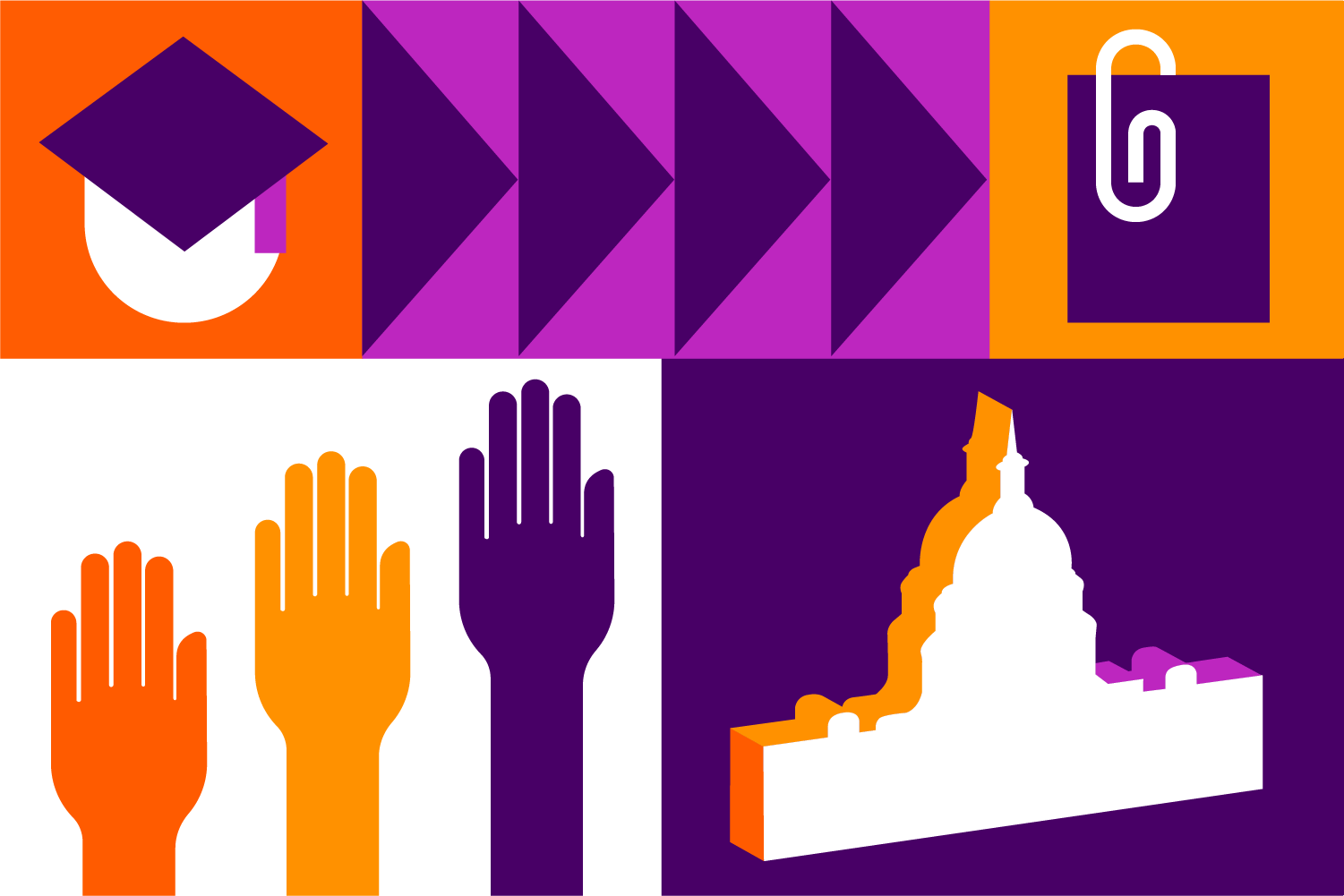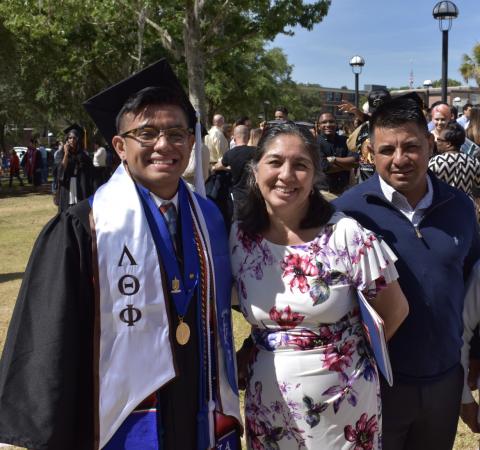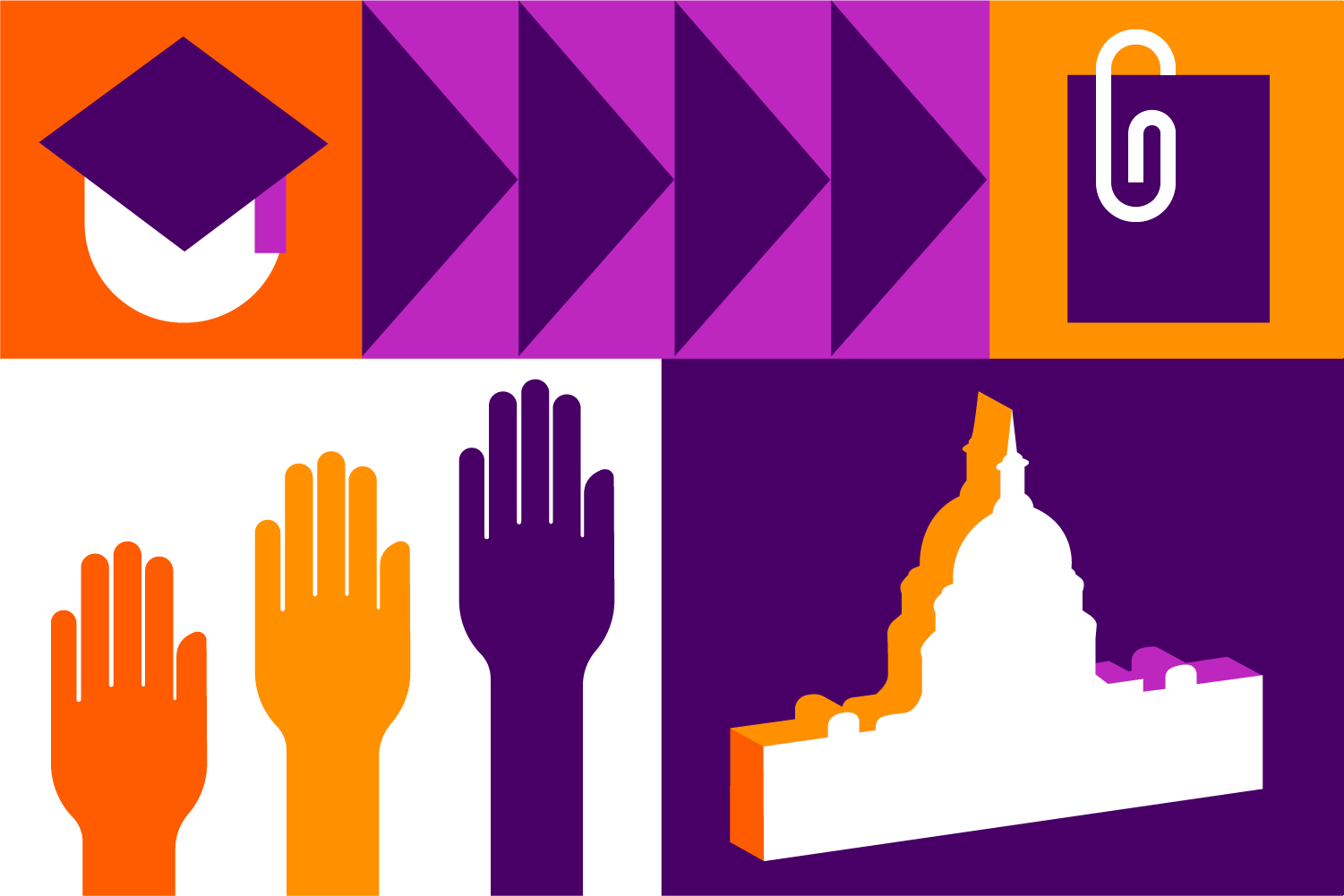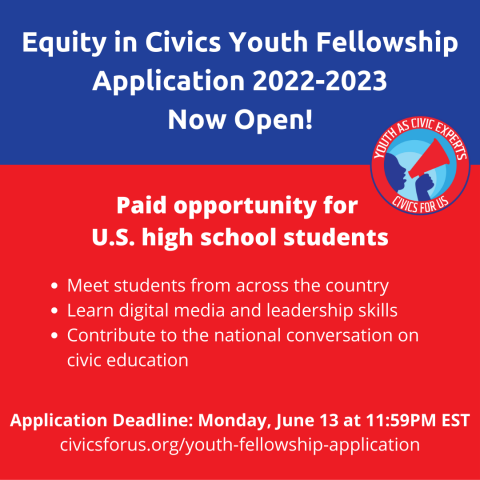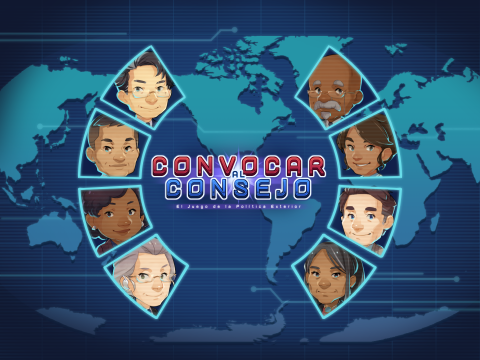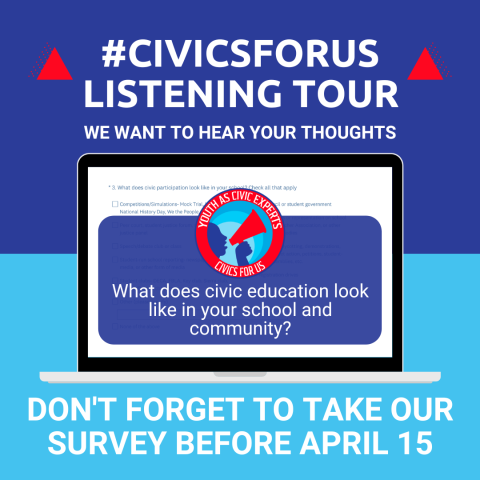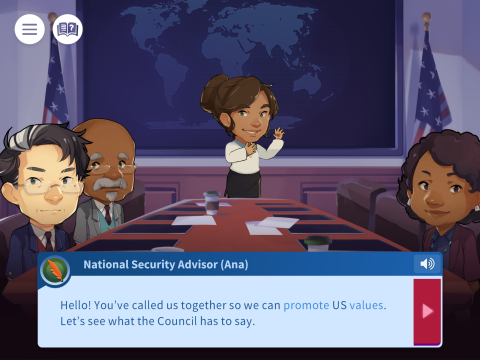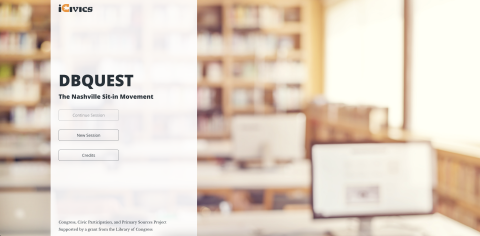Last week, #FlatAna came to the WIDA conference in Louisville, Kentucky, with three members of the iCivics staff to learn more about the best ways we can continue to support ELs and MLs in our games and other resources. Ana has many roles in iCivics games. She is a campaign manager, guide, assistant, and all around helper. She’s bilingual in English and Spanish, and she believes in the iCivics mission of reaching all learners, especially multilingual and English learners. And if you follow our social media, you know that since June, #FlatAna has been doing a lot of exploring!
The WIDA Annual Conference is for educators, administrators, and curriculum developers to share best practices and learn new classroom strategies.The opening keynote address featured Juliana Urtubey, 2021 National Teacher of the Year, who talked about the value of being multilingual: “If you speak another language, you are linguistically gifted…” Her message focused on building a “joyous and just education for all.” She said, “Celebrate your successes, compost your failures. Nobody loses when we are all empowered. It is possible when we build a world of wonder and justice around our students.”
Game-based learning follows that idea. You get to empower your students by having them play the role of a presidential candidate, a lawyer, a county chair, a legislator, etc. In games, it’s ok to make mistakes, or fail. Like Juliana Utrubey says, you can “compost your failure” by playing again. At iCivics, we give students the opportunity to explore content through games which engages all learners and generates wonder in the classroom. What did Ana’s colleagues think?
Kristen Chapron, Senior Editor of Digital Learning and ELL: “The best part about the conference is learning new tips and strategies that we can apply to our games, activities, and lesson plans. In the session, Teaching Language Objectives Using Next Generation ESL Curriculum Resources, Dr. Jennifer Altavilla-Giordano broke down the components of creating language objectives. Participants were able to practice using and adapting the tools. Function and features are key. I also learned innovative ways to engage students with academic language from Nadra Shami, ELL Language and Literacy Trainer, in an interactive session called Developing Academic Language in the Content Areas. I also loved the energy and great ideas from other sessions, and I am excited to get back to curriculum writing, apply these practices, and share them with our team.”
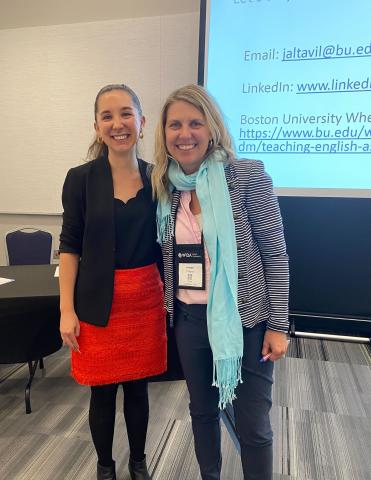
Kristen Chapron with Dr. Jennifer Altavilla-Giordano, lecturer and program director for TESOL & Bilingual Education at BU Wheelock College of Education & Human Development.
Angela Clay, Curriculum Associate for EAD: “I had the privilege of learning about James Baldwin’s speech “A Talk to Teachers” from Dr. Carl Grant. Dr. Grant related Baldwin’s 1963 speech to the contemporary world. He articulated eloquently the significance of how a student’s self-image is mirrored in history and the classroom. When students recognize themselves in the lesson, they develop a sense of belonging in the classroom and in society. Dr. Grant was also able to illustrate the overlap between English learners and minority students. Both groups are resilient and, as Baldwin argued, they belong in today’s society. In order for all students to develop a good self-image, it is the responsibility of educators and curriculum leaders to guarantee that we educate our children and acknowledge the complex layers necessary to create a more inclusive learning environment for students to have a positive self-image. Dr. Grant charged us as educators to ensure we empower our students to build a more inclusive classroom and society.”
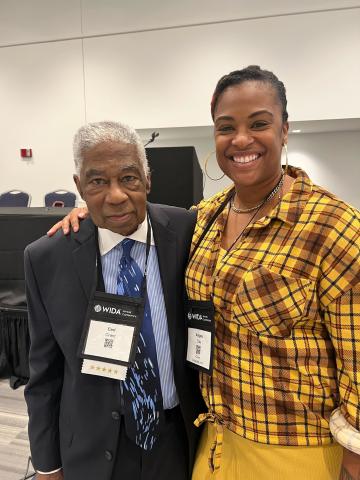
Angela Clay with Dr. Carl Grant,Hoefs-Bascom Professor in the Department of Curriculum and Instruction and former Chair of the Afro American Studies Department at the University of Wisconsin-Madison
Amanda Setters, Curriculum Associate: “As a former Social Studies teacher, I really enjoyed exploring new classroom strategies. In my new role creating resources, I fall back on that knowledge to develop materials that are not only rigorous, but also include impactful scaffolds that save teachers time and effort. In my session on Scaffolding Strategies for High School EL Students, I did just that. High School English Teacher Noel Emilius gave an excellent presentation on strategies she implements to scaffold grade level content assignments to support all learners. In addition to taking us on a tour through one of her lessons, we also took some workshop time to discuss how we have used strategies in the field. Then we had time to apply the knowledge in our work. What is so powerful is that the time investment in creating these lessons can benefit a wide range of learners in today’s classroom so it is truly time well spent. It also highlights the need to network with other teachers to collaborate and share the workload. The exhibitor hall also had tons of resources that can help classrooms leverage technology to develop language skills so I really enjoyed seeing the variety of materials and tools that are available.”
